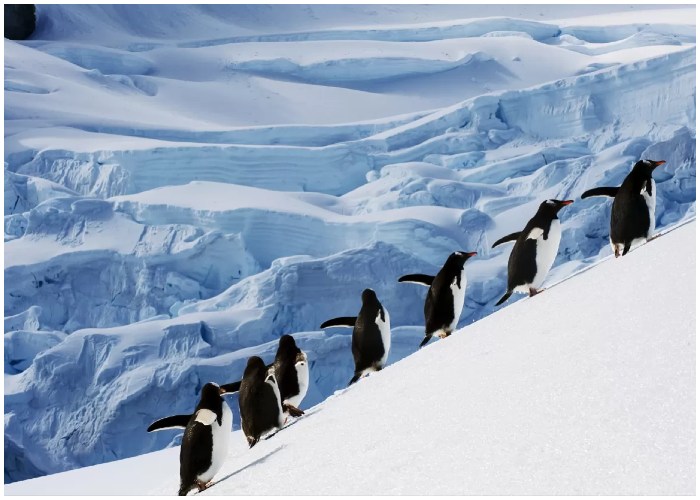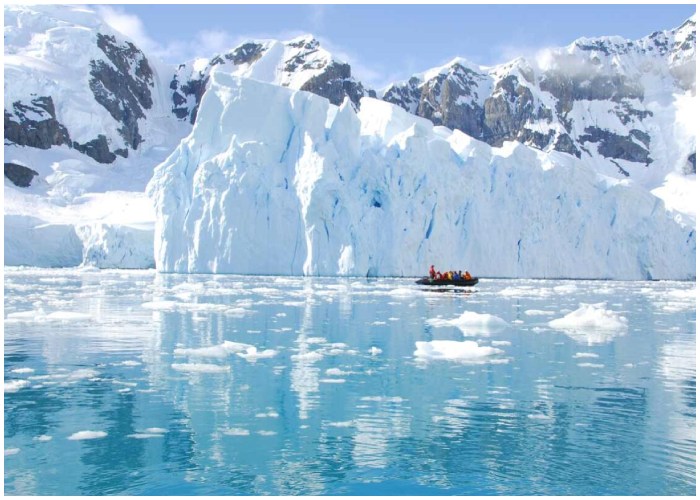Antarctica, a continent almost four times the size of the United States, is renowned today for its vast, miles-thick ice sheet that covers nearly the entire landmass. However, this wasn’t always the case. The frozen landscape we see today formed relatively recently in geological terms. Roughly 34 million years ago, Antarctica began its transformation from a much warmer environment, one resembling the tundra and forests found in northern Canada, into the icy, barren land we know now.
This shift was driven by significant global climate changes, primarily the cooling of Earth’s temperature and a reduction in carbon dioxide levels. Understanding when and how this transformation occurred provides valuable insight into Earth’s changing climate. In this article, we will explore the factors that caused the ice sheets to form, the role of plate tectonics, and what evidence scientists have found to support the timeline of Antarctica’s dramatic change.
Global Climate Changes and Carbon Dioxide Levels
The climate of Antarctica, like the rest of the planet, is deeply influenced by global temperatures. Approximately 50 million years ago, the world was significantly warmer, by about 25 degrees Fahrenheit (14 degrees Celsius). Over the next 16 million years, temperatures steadily declined, leading to a more temperate climate. By 34 million years ago, at the Eocene-Oligocene boundary, the Earth’s temperature was still warmer than it is today but had cooled enough to trigger the formation of ice sheets. One of the key factors in this cooling trend was the change in carbon dioxide (CO2) levels in the atmosphere.
High concentrations of CO2 trap heat, leading to warmer global temperatures. Around 60 to 50 million years ago, atmospheric CO2 levels were much higher than today, reaching around 1,000 to 2,000 parts per million (ppm), which was up to five times today’s levels. As CO2 levels began to decline, the global climate cooled, making it possible for ice sheets to form on Antarctica. This reduction in CO2 is believed to have played a major role in shifting the Earth into a cooler state, allowing ice to take hold on the continent.

The Role of Plate Tectonics and the Formation of the Drake Passage
In addition to changes in carbon dioxide levels, another significant factor in Antarctica’s transition to an icy landscape was the movement of tectonic plates. Around 34 million years ago, the continents of South America and Antarctica separated, creating the Drake Passage. This newly formed body of water allowed for the establishment of the circumpolar current, a flow of water that circulates around Antarctica and isolates it from warmer ocean currents.
This isolation prevented warmer air from reaching Antarctica, further contributing to the continent’s cooling. The tectonic shifts not only affected ocean currents but also influenced the carbon cycle. The weathering of rocks and volcanic activity, both of which are part of the carbon cycle, had an impact on atmospheric CO2 levels. Over thousands of years, these geological processes contributed to the balance of gases in the atmosphere, helping to further cool the global climate and allowing the Antarctic ice sheet to expand.
Evidence of Antarctica’s Icy Transition
Scientists have gathered evidence of this major climate shift through the study of chemical signatures in rock sediments. Oxygen isotopes, which exist in two forms — oxygen-16 and oxygen-18 — provide clues about the size of ice sheets in the past. During periods of ice formation, more of the lighter oxygen-16 is stored in ice sheets, while the oceans contain a higher proportion of the heavier oxygen-18. By analyzing the oxygen isotopes in the shells of small sea creatures preserved in ocean sediments, researchers have detected a significant shift around 34 million years ago. This jump in the proportion of oxygen-18 in ocean sediments is strong evidence of the growth of the Antarctic ice sheet at that time.

Could Antarctica Become Ice-Free Again?
While Antarctica has been covered in ice for millions of years, it is possible that it could become ice-free again in the future. The Earth has gone through cycles of warming and cooling before, and human activity could accelerate the loss of ice. Although it’s unlikely that the entire Antarctic ice sheet will melt completely due to human influence, ongoing efforts to reduce carbon emissions and limit global warming are crucial in preventing catastrophic ice loss. It’s up to us to take action to protect the Antarctic ice sheet and avoid the worst-case scenarios for the future of our planet.